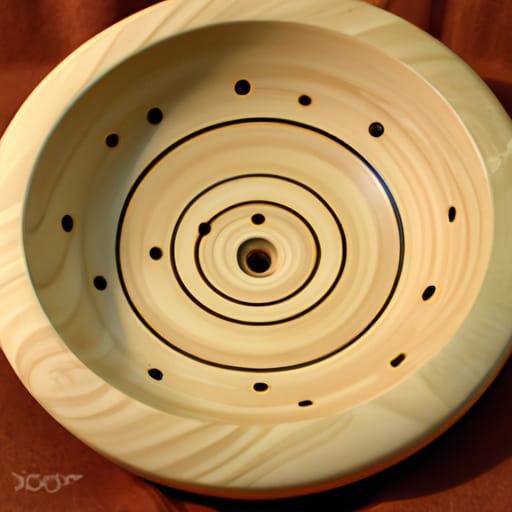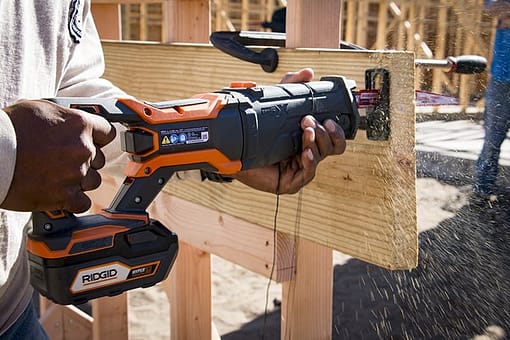If you have ever found yourself wondering whether or not you need a woodworking lathe, you are not alone. Many hobbyists and professionals alike have contemplated this very question. A woodworking lathe is a versatile tool that can add a new dimension to your woodworking projects. In this article, we will explore the various uses of a woodworking lathe and help you decide if it’s a worthwhile addition to your workshop. So, buckle up and let’s delve into the world of woodworking lathes!
What is a woodworking lathe?
A woodworking lathe is a specialized tool used in woodworking to shape and turn wood. It consists of a motor-driven spindle that holds the wood securely in place while it rotates at a high speed. This allows the woodworker to use various cutting tools to shape the wood and create intricate designs.
Understanding the basics
To operate a woodworking lathe, you attach a piece of wood to the spindle and secure it in place using a combination of a live center and a tailstock. As the wood rotates, you can use different chisels and gouges to remove material and shape the wood into desired forms.
Different types of woodworking lathes
There are various types of woodworking lathes available on the market, each designed for specific purposes. Some common types include benchtop lathes, which are compact and suitable for small projects, and floor-standing lathes, which are larger and more powerful. Additionally, there are also specialized lathes for specific tasks such as pen turning or bowl turning.
Considerations before purchasing a woodworking lathe
Before purchasing a woodworking lathe, there are several important factors to consider.
Available space
One key consideration is the available space in your workshop. Woodworking lathes vary in size, so it’s essential to ensure that you have enough room to accommodate the lathe and have space to maneuver around it comfortably.
Budget
Another factor to consider is your budget. Woodworking lathes can range in price from a few hundred to several thousand dollars. It’s important to determine how much you are willing to spend and find a lathe that fits within your budget.
Intended use and projects
You should also consider your intended use and the types of projects you plan to undertake. Different lathes may have varying capabilities and features, so it’s important to choose one that aligns with your woodworking goals. If you primarily plan on turning small items like pens, a mini lathe may be sufficient. However, if you have ambitions of turning larger bowls or furniture legs, a larger lathe with more power and capacity would be more suitable.
Benefits of owning a woodworking lathe
Owning a woodworking lathe comes with numerous benefits that can enhance your woodworking experience.
Versatility
One of the major advantages of owning a woodworking lathe is its versatility. With a lathe, you can create a wide variety of turnings, including bowls, plates, spindles, and decorative accents. The ability to shape wood in various ways opens up endless possibilities for creativity and exploration.
Creating custom pieces
A woodworking lathe allows you to create one-of-a-kind custom pieces that reflect your personal style and taste. By turning your own bowls, table legs, or decorative accents, you can add a unique touch to your woodworking projects and create items that are truly tailored to your preferences.
Enhanced woodworking skills
Using a woodworking lathe provides an opportunity to develop and refine your woodworking skills. As you become more comfortable with the lathe, you’ll gain a better understanding of wood grain, tool technique, and design principles. This can lead to a deeper appreciation for the craft and improve your overall woodworking abilities.
Drawbacks of owning a woodworking lathe
While owning a woodworking lathe offers many benefits, there are also some drawbacks to consider.
Cost
One major drawback of owning a woodworking lathe is the cost. Lathes can be a significant investment, especially if you opt for higher-end models with advanced features. Additionally, you may also need to invest in various accessories, such as chisels and gouges, which can add to the overall expense.
Space requirements
Another consideration is the space required to accommodate a woodworking lathe. Larger lathes can take up a significant amount of floor space, which may not be feasible for hobbyists with limited workshop areas. It’s crucial to ensure that you have enough room to comfortably use and store the lathe.
Learning curve
Using a woodworking lathe requires a certain level of skill and practice. There is a learning curve involved in understanding how to properly use the lathe and mastering various techniques. It may take some time and dedication to develop the necessary skills to produce high-quality turnings.
Projects that can be done with a woodworking lathe
A woodworking lathe opens up a world of possibilities for the projects you can create.
Turning bowls and plates
One of the most popular projects on a woodworking lathe is turning bowls and plates. With the ability to shape wood into curved forms, you can create beautiful and functional pieces for your kitchen or home decor. The lathe allows you to carve intricate designs and create unique patterns in the wood.
Producing table legs
Another common use for a lathe is producing table legs. By turning cylindrical or tapered shapes, you can create sturdy and visually appealing legs for tables or chairs. This allows you to customize the design of your furniture and ensure a cohesive look throughout your space.
Creating decorative accents
A woodworking lathe also enables you to create decorative accents for various items. From finials to knobs and handles, you can turn small components that enhance the overall aesthetic of your furniture or cabinetry. These accents add a personal touch and elevate the craftsmanship of your projects.
Skills required for using a woodworking lathe
Using a woodworking lathe requires specific skills and attributes.
Hand-eye coordination
Operating a lathe requires precise hand-eye coordination. You must be able to maneuver the cutting tools along the rotating wood while maintaining control and precision. Developing good hand-eye coordination is essential for achieving smooth and accurate cuts.
Ability to work with different materials
A skilled lathe user should be comfortable working with different types of wood. Each wood species has unique characteristics that can impact the turning process. It’s important to understand how different woods behave on the lathe to achieve the desired results.
Understanding of safety measures
Safety is paramount when using a woodworking lathe. It’s crucial to understand and follow proper safety measures, such as wearing protective gear, keeping the work area clear of debris, and using the correct techniques to prevent accidents. A thorough understanding of safety practices ensures a safe and enjoyable woodworking experience.
Understanding the maintenance and upkeep of a woodworking lathe
Regular maintenance and upkeep are necessary to keep a woodworking lathe in optimal condition.
Regular cleaning
To maintain the performance of your lathe, regular cleaning is essential. Dust and debris can accumulate on various parts of the lathe, affecting its functionality. Regularly cleaning the lathe helps ensure smooth operation and prolongs its lifespan.
Sharpening and replacing tools
Over time, the cutting tools used on the lathe can become dull and less effective. Regular sharpening keeps the tools in optimal condition, allowing for clean and precise cuts. Additionally, when the tools become worn or damaged, replacing them is necessary to maintain the quality of your turnings.
Checking and adjusting parts
Regularly inspecting and adjusting various parts of the lathe is important to prevent and address any issues. This includes checking the alignment of the headstock and tailstock, tightening loose bolts, and lubricating moving parts as needed. By keeping the lathe well-maintained, you can ensure its continued performance and longevity.
Alternatives to a woodworking lathe
If owning a woodworking lathe is not feasible for you, there are alternative methods to achieve similar results.
Hand carving
Hand carving is a traditional technique that can produce similar intricate designs to those made with a lathe. With the use of carving tools, you can shape wood by hand, creating unique and detailed patterns. While hand carving requires more time and practice compared to using a lathe, it offers a hands-on and artistic approach to woodworking.
Using a wood router
A wood router is a versatile power tool that can be used to create decorative shapes and profiles on wood. By using different router bits and guides, you can carve designs on the surface of the wood. While it may not provide the same level of versatility as a lathe, a wood router can be a suitable alternative for certain projects.
CNC machinery
For those with advanced woodworking needs, CNC (Computer Numerical Control) machinery offers a high-tech alternative to a lathe. CNC machines use computer programming to control the cutting and shaping of wood. This allows for precise and intricate designs, making it an efficient and accurate option for woodworking projects.
Factors to consider when choosing a woodworking lathe
When choosing a woodworking lathe, several key factors should be taken into account.
Size and weight
Consider the size and weight of the lathe, ensuring that it fits within your available workshop space. If you have a small workshop, a compact and lightweight lathe may be more suitable. However, if you have ample space and plan to work on larger projects, a heavier and more robust lathe may be necessary.
Motor power and speed
The motor power and speed of the lathe are crucial factors to consider. Higher horsepower enables the lathe to handle larger and more demanding turnings. Additionally, variable speed options allow for greater control and versatility in shaping different types of wood.
Quality of construction
The quality of construction of the lathe is important to ensure durability and longevity. Look for a lathe made from sturdy materials with solid construction. It’s also beneficial to read reviews and consider the reputation of the manufacturer to ensure you are investing in a reliable and well-built machine.
Conclusion
Whether you are a professional woodworker or an enthusiastic hobbyist, a woodworking lathe can greatly enhance your skills and creativity. By understanding the basics of lathe operation, considering the necessary factors before purchasing, and exploring the various projects and skills associated with lathe work, you can make an informed decision about whether owning a woodworking lathe is right for you. Remember to consider alternative methods if a lathe is not feasible, and always prioritize safety and maintenance to ensure a fulfilling and long-lasting woodworking experience.










